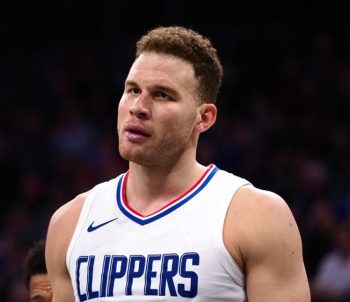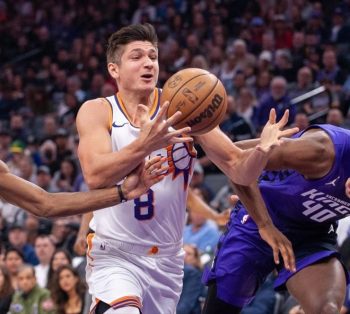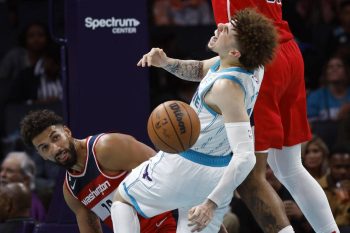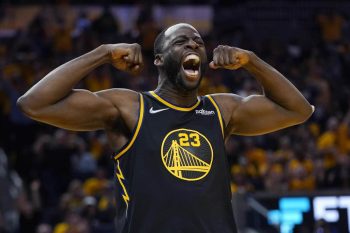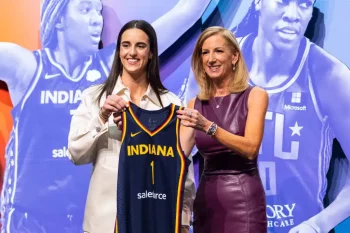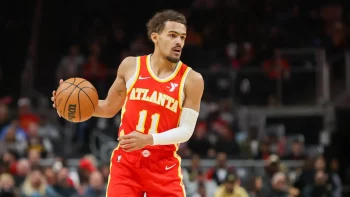NBA
Cheap Seats: Who is NBA’s Most Improved Player?

Every season, we welcome in a new group of interns and typically their work is done primarily behind the scenes. But now that the current group has been around for awhile, we’re giving them a platform to voice their thoughts on the NBA. Each week, Basketball Insiders’ interns Jesse Blancarte, Cody Taylor and John Zitzler will discuss a topic related to the league in Cheap Seats.
This week, the interns discuss the NBA’s Most Improved Player for the 2013-14 season.
Born ready, he may not have been, but with a few years of NBA experience under his belt Lance Stephenson has more than proven this year, he is ready.
Last year, following Danny Granger’s injury, the Indiana Pacers were in need of a player to fill the void left and that player was Stephenson. The former New York City high school legend and second-round pick out of the University of Cincinnati started 72 games during the 2012-13 season and played well, shooting 46 percent from the field while averaging just fewer than nine points a game. He was a key contributor for the Pacers during the postseason, performing well in increased minutes. However, the Pacers’ championship dreams fell short. Though Indiana was unable to achieve their ultimate goal, it was clear that they may have stumbled upon a diamond in the rough in Stephenson.
The Pacers to date have the best record in the Eastern Conference and Stephenson has been a major contributor to that success. He is averaging a career high in minutes per game (35.5) and has parlayed those minutes into a very productive season thus far, scoring 14.2 points per game to go along with over seven rebounds and five assists. Stephenson has proven this season that he is one of the more valuable and well rounded guards in the NBA today. His combination of size, strength and skill set make him a very tough match-up for opposing guards. Stephenson may not be an elite shooter from deep, but if given some space he has the ability to knock down the three. While he can shoot it, the biggest strength of Stephenson’s game may be his ability to maneuver through the lane and finish strong around the rim. Inside three feet from the rim, Stephenson is making a very impressive 69.7 percent of his shots. His ability to contribute in many different aspects of the game has made him tremendously effective.
While Stephenson has improved mightily on the offensive end, he has made huge strides on the defensive side of the ball as well. The Pacers hang their hat on their ability to shut down opposing teams in the half court and they do as good of a job as any team in the league. The Pacers’ defense is anchored by Roy Hibbert, who does a magnificent job protecting the rim and is one of the best defensive big men in the league. While Hibbert locks down the paint, Stephenson and Paul George have been great containing opposing wings out on the perimeter. Stephenson’s defensive rating this season is 98.5 and while the Pacers’ team defense might inflate his individual rating a bit, he ranks ahead of very good defenders like Kawhi Leonard and Andre Igoudala.
Stephenson will be a free agent following this season and is poised for a big pay day presuming he can continue to produce at this rate. He is in the final season of a four-year, $3.35 million contract and will be due a significant raise. The question is, will the Pacers be the team to pay Stephenson the money he deserves? It is expected that Stephenson will garner quite a bit of interest around league if he doesn’t re-sign with the Pacers and will certainly be offered a very healthy contract. What makes Stephenson so valuable and what separates him from many other wings in the league is that ability to contribute in many different ways. Every night, he is a threat to put up a triple double. For a player still in the early stages of his career, it isn’t hard to see why GMs around the league may be ready to open their check books to try and land Stephenson.
The Pacers are loaded with talent, most notably George and Hibbert, but Stephenson has managed to carve out a very nice niche for himself. His play will be crucial in the postseason for the Pacers when they inevitably run into the Miami HEAT. He has very quickly developed into one of the most valuable players on the Pacers. Hibbert and George were both All-Stars this season, and you could easily argue that Stephenson deserved to be there with his teammates. Playing a major role on the best team in the Eastern Conference may not have been enough to get Stephenson into the All-Star game this year, but it is hard to imagine Stephenson missing many more All-Star games in the near future. He is most definitely in the running for Most Improved Player of the Year. He has improved his stats across the board, he is playing very well within the team’s defensive concepts and he has been a huge part of the Pacers’ success so far this season. Stephenson has put it all together this year and surely has a very bright future ahead of him.
– John Zitzler
One player this season has addressed weaknesses in his game, adapted himself to a new coach and system, improved his defense, and stepped up when his All-Star teammate suffered a major injury. This player is Blake Griffin.
After missing a year, Griffin burst onto the scene, averaging 22.2 points, 12.1 rebounds and 3.8 assists, on 50.6 percent shooting from the field in his delayed rookie season. These numbers are historically impressive for a 21-year-old in his rookie year. Despite his impressive play, the Clippers did not make the playoffs in 2010-11, but an exciting core was in place that featured Griffin, Eric Gordon, Eric Bledsoe and DeAndre Jordan.
Things changed, however, when the Clippers managed to swing a trade for Chris Paul. Griffin instantly became the second best player on the Clippers and the team’s focus shifted to winning right away. In spite of this change in the pecking order, Griffin was expected to develop and improve from his rookie season and be the Robin to Paul’s Batman.
With the inclusion of Paul, the Clippers were expected to compete for a championship. Thus, fans and critics looked for Griffin’s game to expand and improve from his rookie season. Unfortunately, Griffin’s highlight dunks subjected him to a reputation of being “just a dunker.” In his second season, Griffin averaged 20.7 points, 10.9 rebounds and 3.2 assists, on 54.9 percent shooting from the field. Griffin’s stats were down, and, most notably, his free throw percentage dropped from 64.2 percent in his rookie season to 52.1 percent. He still struggled to hit midrange jumpers, and it seemed he was stuck in a sophomore slump. Because of this, the luster of Griffin’s historic rookie season was gone, and the skepticism of his game grew.
Last season, Griffin’s per game numbers continued to fall. He averaged 18 points, 8.3 rebounds and 3.7 assists, on 53.8 percent shooting from the field. However, this was mainly a result in a reduction in minutes per game. Regardless, there was a perception that Griffin was regressing. Any time TNT was televising a Clippers game, Charles Barkley would criticize Griffin for not imposing his will on opposing teams. Clipper fans would push back from this national criticism that surrounded Griffin, pointing to Griffin’s statistics averaged over 36 minutes per game, and his solid efficiency numbers. However, it seemed that with a secondary role, Griffin lost the confidence to play with the relentless energy and tenacity he displayed his rookie season.
Griffin seemed hesitant. He regularly passed up midrange jumpers, and seemed to use Paul as a crutch. In the biggest moments, Griffin would defer to Paul. Last year in the playoffs, Griffin suffered a high ankle sprain in practice, which limited his effectiveness. The Clippers lost in the first round, and it became clear that Paul could not carry this team to the Finals on his own.
This offseason, in an effort to add championship level coaching, the Clippers successfully negotiated with Boston to acquire Doc Rivers as their new coach. Rivers immediately instilled confidence in his players. Griffin was ready and excited.
“Our offense is going to have a totally different look this year,” Griffin told ESPN entering the season. “Our offense is going to have a lot of movement and floor spacing. I’m looking forward to it. … I’ve really been working, doing a lot of face-up stuff. Understanding where I’m going to be in the offense, what my options are and trying to be more of a facilitator this year.”
This season, Griffin is averaging 24.1 points, 9.8 rebounds, 3.5 assists and is shooting 70 percent from the free throw line and 53.3 percent from the field. The biggest jump has been in Griffin’s efficiency. His Player Efficiency Rating (PER) is at a career-high 24.12, and his true shooting percentage is at a career high 58.6 percent. While these numbers are good, they only tell a small part of Griffin’s development this season. On January 3, against the Dallas Mavericks, Paul separated his shoulder. Griffin took on the task of keeping the Clippers afloat without its leader, the team went 12-6, and actually gained ground in the West.
In those 18 games, Griffin averaged 27.5 points, 8.2 rebounds, 3.8 assists, 10.8 free throws a game and shot 55.4 percent from the field. Griffin recognized that he needed to again take on the role as the go-to player on the team. Often times he would grab a defensive rebound, run up the court and would either assault the basket with his athleticism or make a play for someone else to score. Griffin also implemented his improved jump shot. Last season, Griffin shot 34.3 percent from beyond 16 feet, and within the three point line. This season, he is shooting 40.6 percent there and looks more confident.
In February, Griffin averaged 30 points, 10.7 rebounds, 3.8 assists and 11.2 free throws, while shooting 54.5 percent from the field. There was a concern that when Paul returned from injury, Griffin would regress to his usual secondary role. Instead, Griffin has continued his strong play, and the reintegration of Paul has added to Griffin’s enhanced production.
Doc Rivers has recognized Griffin’s improved play as well.
“(Griffin) facing up has just become a weapon,” Rivers told Reuters. “It’s so hard to guard and if you do he’s such a great passer. That combination is what has opened it up. If you help, he’ll pick you apart.”
With Paul, Jared Dudley, Jamal Crawford, Darren Collison, currently injured J.J. Redick and new addition Danny Granger surrounding him at times, opposing teams have to choose between double-teaming Griffin in the post or sticking with the shooters on the perimeter. Griffin has become a match-up problem for all teams, and it seems he is finally imposing his will on games just as Barkley had called for the last few years.
What is scary for the rest of the league is that Griffin is only 24 years old, and still has a lot of room for improvement. He will never be an elite defensive player like Anthony Davis, however, within River’s defensive schemes, Griffin can continue to improve his defensive efficiency, positioning and timing. His jump shot can also still improve, along with his free throw percentage. However, unlike in prior seasons, Griffin understands his role offensively and defensively, and has managed to combine the tenacity and confidence he played with his rookie year, with his improved skill-set and increased efficiency, making him a top player in the league.
With respect to players like Paul George, Lance Stephenson, LaMarcus Aldridge and Goran Dragic, all of whom can argue they are the most improved player, Griffin has done what none of them have this season. He has usurped the mantle of most important player on his team from a top three player in the league in Paul. That’s right, Blake Griffin is the key to the Clippers’ chances of winning a title this year. He is an outside candidate to win league MVP, and if things break the right way for the Clippers, he could win his first NBA championship this year. Not bad for “just a dunker.”
– Jesse Blancarte
The Los Angeles Lakers signed point guard Kendall Marshall to a two-year deal back in December, shortly after they lost Steve Nash, Jordan Farmar and Steve Blake to injuries. The result has been the best-case scenario for the Lakers, as Marshall currently ranks second in the league with 9.4 assists per game.
Marshall spent last season with the Phoenix Suns, the team that drafted him with the 13th pick in the 2012 draft. He was traded after the season to the Washington Wizards and was then released. The major knock against Marshall was his lack of an outside shot; he shot 32 percent from three-point range in 48 games with the Suns. It’s easy to see why the Suns traded him away, and why the Wizards then released him – point guards must have the ability to shoot the three ball.
Marshall worked hard last summer to improve, and the results have been staggering. From one season to the next, Marshall has gone from being written off as a shooter to sixth in the league in three-point percentage at 45 percent. Following his release from the Wizards, Marshall entered his name into the NBA Development League player pool, and was picked up by the Delaware 87ers. In Marshall’s first game with the 87ers, he dropped 30 points, 10 assists and nine rebounds. In seven games in the D-League, Marshall averaged 19.4 points, 9.6 assists and 4.7 rebounds. He shot 46 percent from three-point range this season versus just 22 percent in nine games last season.
The Lakers made the decision to sign Marshall on Dec. 20 and two weeks later, Marshall would turn in his best performance as a pro. The game was against the Utah Jazz on Jan. 3, a game in which the Lakers had just two healthy guards on the team: Marshall and Jodie Meeks. The game would be Marshall’s first start, and first game seeing heavy minutes. Marshall led the Lakers that night with 41 minutes played, so any question regarding his physical shape was answered. Marshall dropped 20 points, 15 assists and six rebounds on 8-of-12 shooting from the floor, and 2-of-3 from three-point range.
Marshall’s first month back in the league saw him lead the league in assists with 11.5 per game. In 31 games this season, Marshall has recorded double-digit assists in 16 games, including two games with 17. Marshall’s college head coach at North Carolina, Roy Williams, told Lakers general manager Mitch Kupchak that Marshall is “probably the best passer in a fast break situation that I’ve ever coached in 26 years as head coach.” Williams also said Marshall is one of the most unselfish players he’s seen, which is backed up with Marshall’s 9.4 assists per game.
On a team with a lot of uncertainty going forward, Marshall has certainly put himself in a position to earn a roster spot next season. The Lakers have only three players guaranteed on the books for next season – Kobe Bryant, Nash and Robert Sacre. Since joining the Lakers last season, Nash has only played in 60 games, including just 10 games this season, so it would be foolish for the team to continue to keep relying on him to return to form.
A positive sign for Marshall sticking around in L.A. was the Lakers’ decision to trade Steve Blake to the Golden State Warriors at the trade deadline. By trading Blake, the Lakers saved money on luxury tax expenses. Marshall is just 22 and earning just $547,570 this season and $915,243 next season on a non-guaranteed contract, so depending on the team’s plans for next season, taking another season to look at Marshall may be in their best interest.
– Cody Taylor
Who deserves the Most Improved Player award? Leave your thoughts in a comment below.
